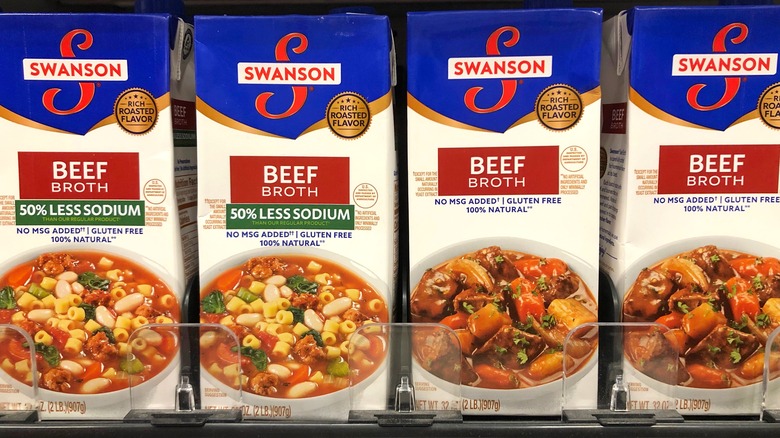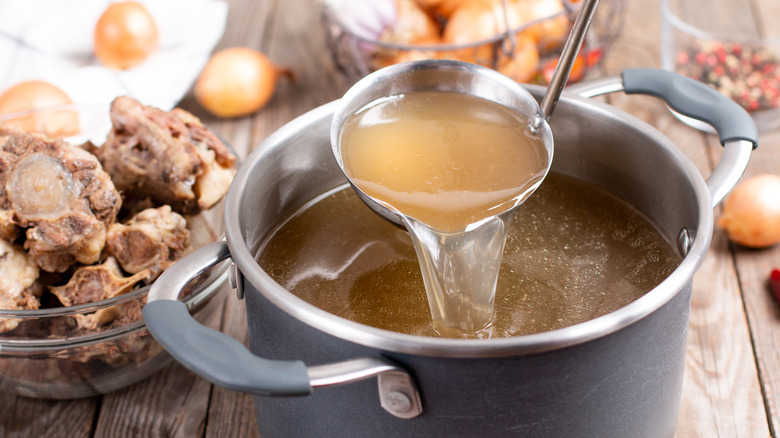The Chef-Supported Case For Buying Low Sodium Stock Over Regular
Whether you are feeling under the weather, looking to warm up from the inside out on a chilly winter day, or simply in the mood for something hearty and flavorful, you can never go wrong with a big steaming bowl of homemade soup. Although soups from scratch require a little more work than canned soups, they also allow the cook free rein over the ingredients that go in, which often results in soups that taste fresher, more personalized, and more full of TLC. A homemade soup is a hug in a bowl.
Soup recipes are almost guaranteed to call for a certain ingredient — stock. Soup stocks are liquids flavored with meats, fish, vegetables, and spices. They not only give soups their brothy consistency but also ensure a robust flavor in every spoonful. Going for a store-bought stock is a convenient choice but can lead to an intolerably salty soup, so a low-sodium stock may be a safer bet, as a professional chef can confirm.
In favor of a less salty flavor
Most soup stocks lining grocery store shelves are packed with sodium – hundreds to thousands of milligrams per serving – which helps bring out the flavor in the liquid. However, when using the average stock in your homemade soup, you may find the saltiness to be overwhelming, especially if the recipe calls for even more salt to be added to the mix. To avoid an overly salty situation, it would be best to stick to a reduced or no-sodium stock, which is also plentifully available at grocery stores.
Vince Terusa, chef of the award-winning Selanne Steak Tavern in Laguna Beach, California, tells Food & Wine that boxed stock is the pantry staple he always has on hand. Based on his experience, he has become adamant about this tip. As he points out "It's easier to add salt than it is to remove."
Sometimes, though, a low-sodium stock can be tricky to find, as salty stocks tend to be the default sold at stores. In the case that you cannot access the low-sodium option, Wolfgang Puck's method for salvaging over-salted soup can help subdue the salty taste by balancing it out with some fat.
Beyond the boxed stock
Alternatively, some home cooks prefer to take the 'homemade' label a step further by avoiding buying a stock altogether and making their own stock from scratch. This extra step may seem daunting, but is actually quite easy and a great way to make the most out of the food scraps accrued in other cooking endeavors.
To make your own stock, all you need is animal bones or vegetable scraps (depending on the leftovers on hand and the dietary preferences of those being served), some herbs of your choice, and plenty of cold water. Let the food scraps soak in the water while it boils and then simmers for a few hours, strain out the solid food, and voila: a versatile stock made only with ingredients that you already have on hand. This hack not only saves you the grocery item cost but also adds another element of fresh flavor to whatever soup you may choose to make.
As flavorsome and comforting as homemade soups can be, implementing these will guarantee that they come out soup-erb.


